Happy Journey to Bylakuppe, Tibetan Buddhist temple of Mysore
Let us travel 5 decades back. The space was lonely, not clear-cut roads or vehicles. A group of monks reached the place by foot. They were not scared of hills and isolated paths, because they were more disturbed of internal political issues than anything else. When India gave refuge to monks from Tibet, they travelled across different regions of the country and one such group reached Coorg. Bylakuppe of Karnataka has several Tibetan settlements and monasteries, and when a day starts it changes to a new world, which is quite different from Indian culture and social life.
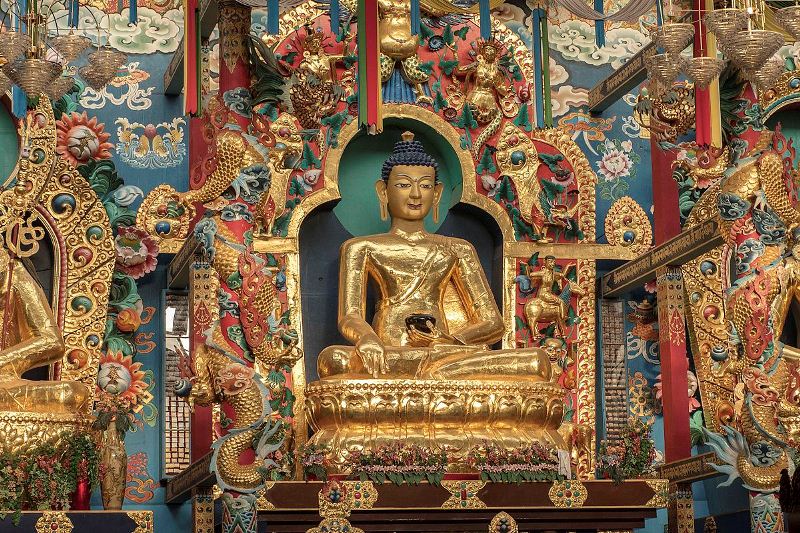
Shops are opened on either side of roads; homes with huge outer walls, shady trees, wandering cows, sweet shops etc. Bylakuppe replicates a small town of Tibet, which owns a different culture. After Dharamshala, Bylakuppe is world’s second largest Tibetan settlement outside the country. Such settlements are seen in Coorg as well, which is 40 kms away.
The soil where prayers open their eyes
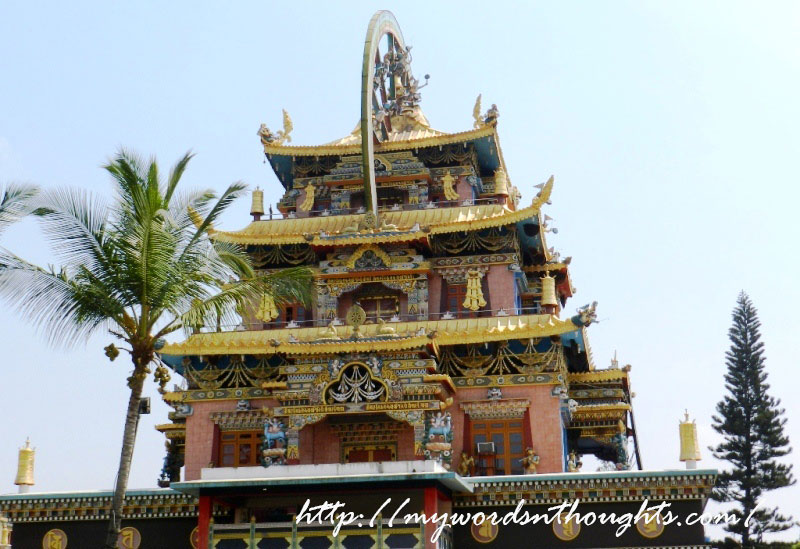
Before Namdroling Monastery opens, its gate will be flooded with crowd. Monks start reaching the place. Either bald headed or with less hair cut too low, monks wear yellow shirt and maroon shawl. They pay less attention to tourists, who are present there to watch the wonderful golden temple of Coorg. Their minds are filled with mantras only. They walk calmly with soft steps, with a thought not to harm the soil which they touch with feet.
A huge bell rang from inside and the gates are opened before tourists. There is a big courtyard inside the gate. Near to it is a 3-storied building where monks stay. A small restaurant is seen in the ground floor – Kunfin canteen with unfamiliar dishes like Momo, Tugpa and Tinmo. It’s meant only for monks and not for travellers. Not only food and way of living, rituals and everything inside it are unfamiliar to outsiders.
When first batch reached this place, it consisted of 10 monks. Penor Rinpoche was their leader. With the blessings of spiritual guru Dalai Lama, with support of Indian government Tibetans reached Karnataka. Ashram was started by him in 1963, which aimed at deep studies and practice of Buddhism. During early years the monks struggled a lot for food, shelter and studies. Penor Rinpoche travelled across countries such as Hong Kong, Taiwan and Philippines and studied the structure before he gave the final shape to the ashram.
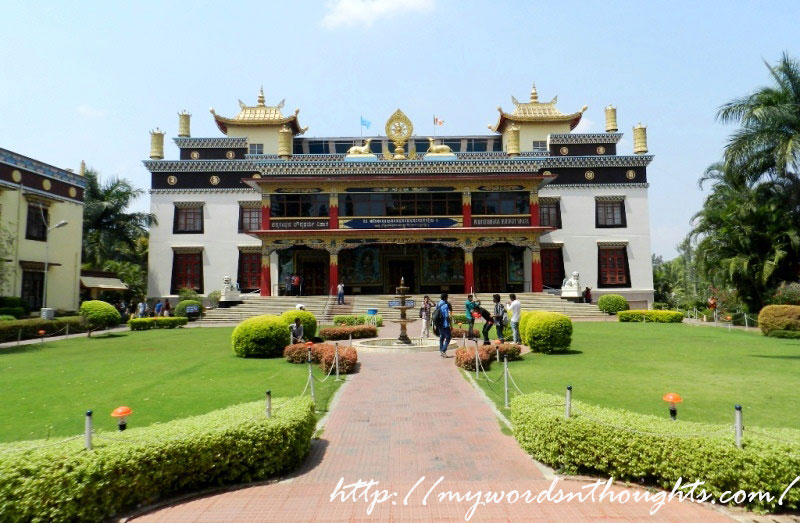
Now the place is filled with hospitals, schools, hotels, bank and above all, a lovely tourist spot. Bylakuppe has changed a lot in the past few decades. Apart from Tibet, Nepal and Myanmar, monks of Indian regions such as Assam, Himachal Pradesh and Ladakh have also settled here. But none from neighbouring state of Kerala.
Into the silent interiors of the temple
Child monks resemble butterflies with maroon wings. Official name of the temple is ‘Padmasambhava Buddhist Vihara’, but commonly known as Golden temple. The temple has three big doors leading to the interior, each with 12-feet size. The door is deep red in colour and two golden faces are fixed. Moustache of the faces is circle in shape, which is the handle of door too.
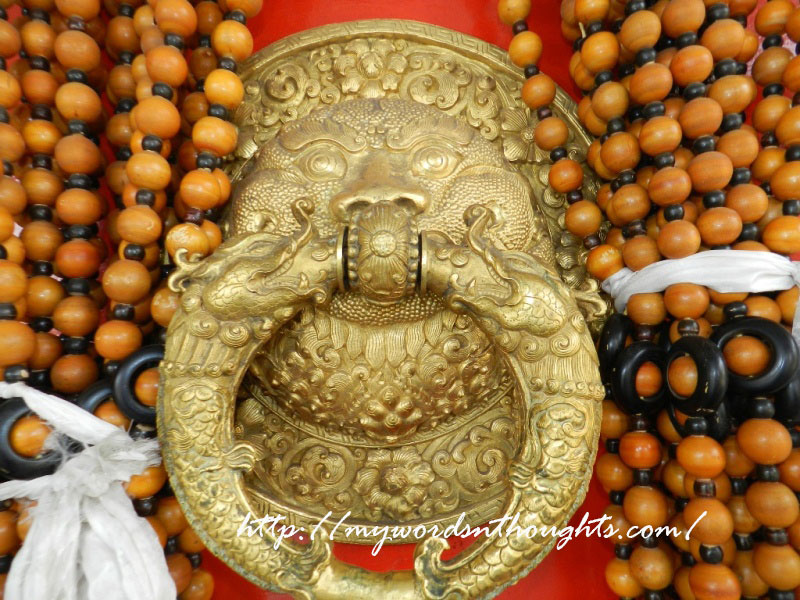
Take off the sandals before entering inside. The flooring is chilled and it’s silence everywhere. It seems like you have entered ‘Alice’s Wonderland’ – the golden magical world. It’s a huge hall with the support of several gigantic pillars. The cluster of three huge Buddhist statues forms the centre of attraction. The shining golden colour totally mesmerizes you. The space is filled with hanging decorations in green, white, yellow, blue and red colours. Decoration lamps add beauty to the place. Walls behind the statues are filled with colourful paintings, which exhibits many divine stories related to Tibetan culture and Buddhism. Many divine characters form a part of the wall paintings.
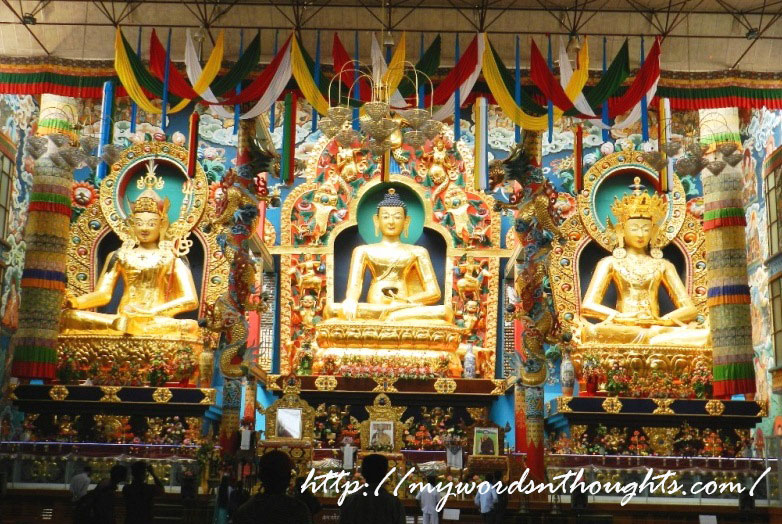
The centre statue is Buddha Shakyamuni – the founder of the Buddhist religion. It is 60 feet high, made using copper and painted in gold. He is Prince Siddhartha born to King Sudhodhana and his wife Maya Devi, who later became Lord Buddha. It’s not at all easy to capture this 60-feet high statue in a single camera shot.
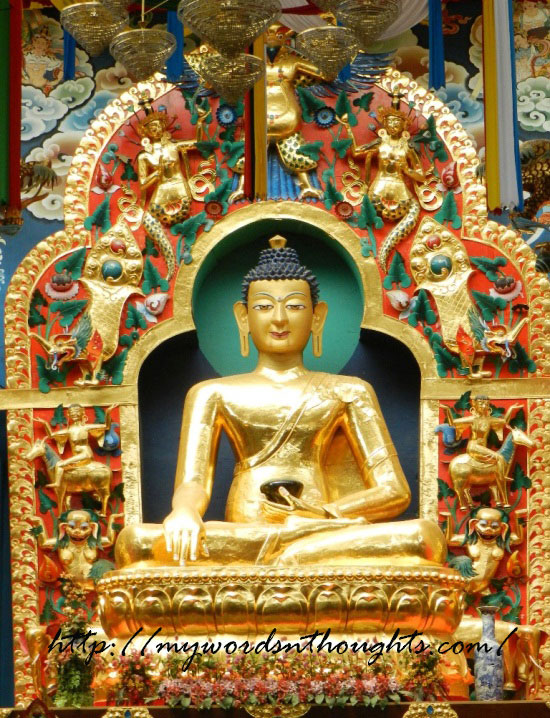
On either side of Buddha there are two more statues each with 58 feet height. They are Guru Padmasambhava and Buddha Amitayus. Guru Padmasambhava is also known as Guru Rinpoche. The spiritual guru spent much of his time in Tibet. He had several spiritual powers. Buddha Amitayus is yet another famous monk related to Buddhism. As per popular he owned a special power to extend the life of humans.
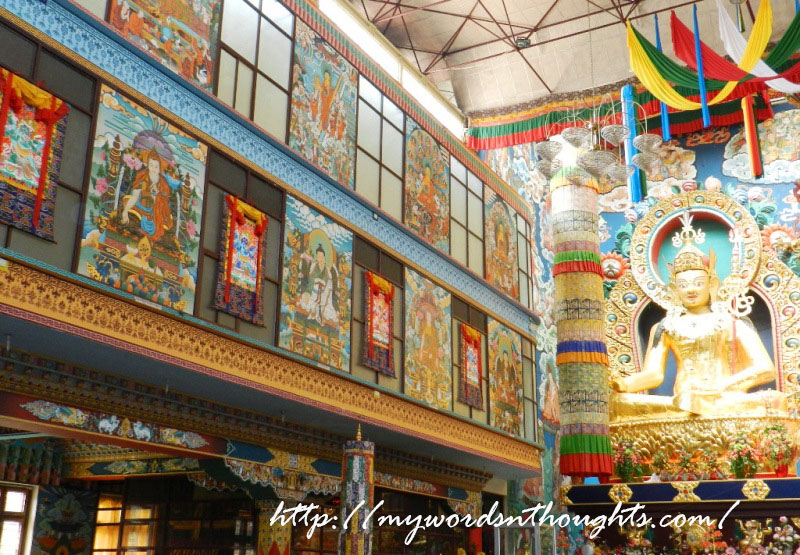
Prayers of Padmasambhava Viraham
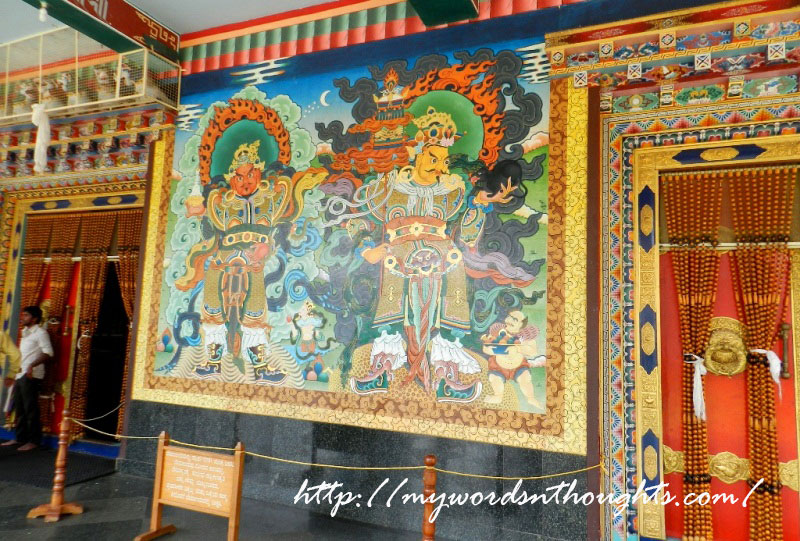
Tibetan traditional instruments for prayers, prayers in Tibetan language, ringing bells, blowing instruments, drums etc lead you to another world, quite different from Indian culture of prayers. There is a small temple where monks pray, accompanied by traditional Tibetan music and prayers in their language. Statues are decorated with multi-coloured lights of small size, and a photo of Dalai Lama is also placed there.
Monks look face to face while praying. Books modelled as palm leaves are kept above the small boxes, and they are reading from those books. They carry small bells in hands which they ring during praying, and also carry a small drum like musical instrument similar to ‘Udukk’. There is a huge collection of musical instruments behind the monks. Wind instruments of different size are placed at one side and big instruments similar to Ganjira are hung at other side. Big Ilathalam, a metallic musical instrument which resembles a miniature pair of cymbals is also used by two people.
The main priest uses a microphone to recite his prayers while his subordinates repeat it. Occasionally they shake hand bells. It is followed by other instruments one after another. It has hours-long prayers, but the temple is restricted to visitors.
There is a room close to this temple where 100s of golden lamps are lighted. In the evenings during prayer hours they are lighted within the room itself. There is yet another monastery of Dalai Lama near to this temple, which opens only during festival season. A big picture of Dalai Lama is placed in front of it. Monks carry books within the temple premises and whole day is spent in a spiritual way, with their readings.
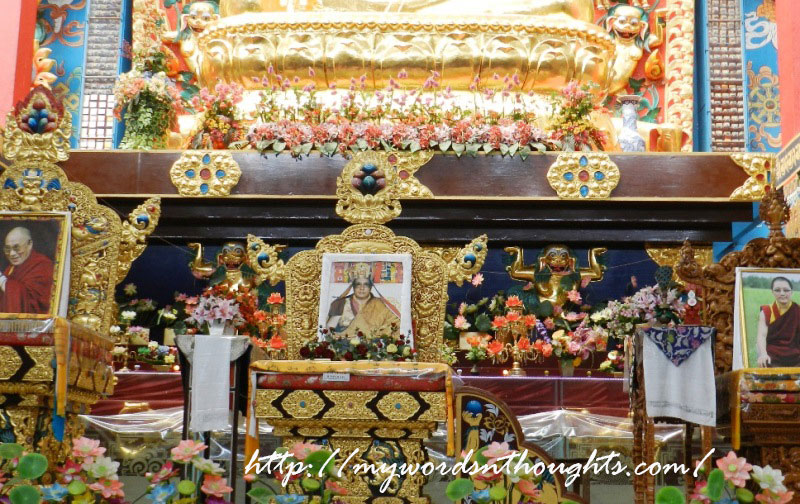
Though all residents believe in Buddhism there are four sections in Tibetan settlement. They have their own temples too. There are two camps named old and new and total number of residents may cross 25K. They have families, and 1000s of monks. Day of a monk begins at 5 am. The rest of the day is fully dedicated to prayers and reading. They repeat the lessons which they know in Buddhist philosophy.
Till noon, they mostly spend in prayers and debates. Their subjects for debates include perfection, logic, emptiness etc. They have 5 subjects in total, for debates which include several sub-categories too. In one such debate, a person stands while the other one sits. The standing person asks question and the other person has to answer it. They usually have lunch at 12 pm. Afternoon is dedicated to studies of religious books, which include many subjects. Night debates are conducted between 5 pm and 12 am.
Visuals are not ending here
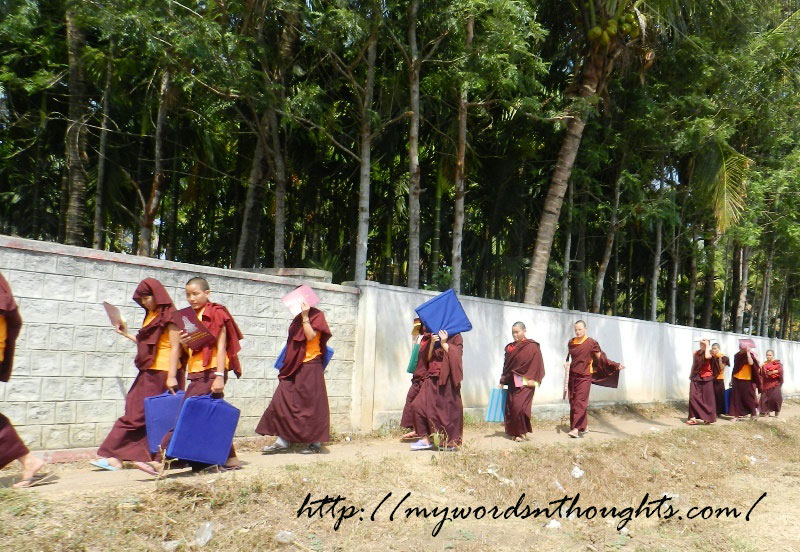
Let us move outside of the walls of Namdroling Monastery. There is a small path near to main gate. Silver coloured prayer wheels and devotees rolling them are visible just a few steps away. There are a total of 1300 prayer wheels, followed by 19 big wheels, which has 100 crores of mantras. If you have full belief and roll the wheels they give health benefits and longevity in return, as per Buddhist beliefs.
You reach 16 pillars next, which are meant for peace of mind and to fill mind with positive thoughts. Penor Rinpoche, who led the folk to this place for the first time built the first one, as per beliefs. They touch skies, giving peaceful messages to visitors. In between these whitewashed pillars and settlements of monks where they stay, there is a huge pillar, where Penor Rinpoche was buried. Lamps are lighted here. He reached here with a few monks and just rupees 300 in hand and later built a huge empire. Visitors come and pray at this pillar.
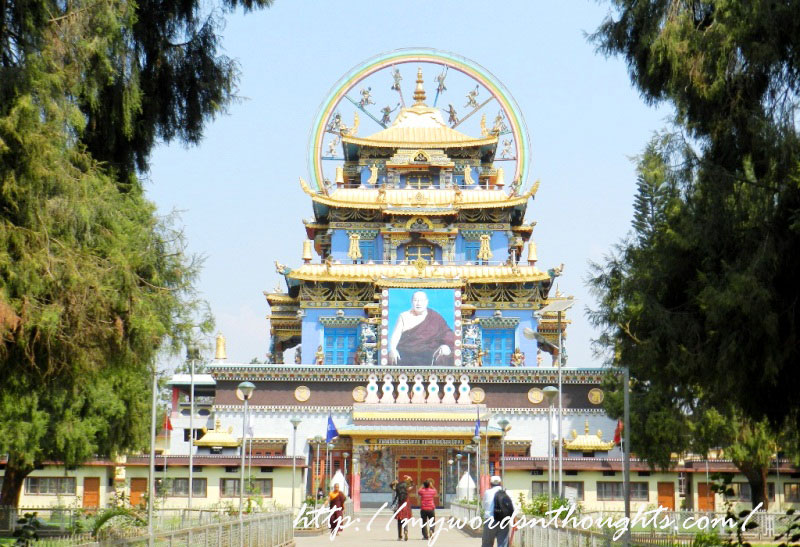
Wonders of Sera Jey
If you visit golden temple, never miss an opportunity to visit Sera Jey Monastery. You need to climb a few steps to reach the monastery. Beauty of its interior is sufficient to silent you. It is nothing short of a colourful festival. A big statue of Lord Buddha is enclosed within a glass box. Dragon structures are near to it. Silence is fully spread inside, which holds the chillness of mantras as well. Sera Jey Monastery University associated with it has more than 4000 students.
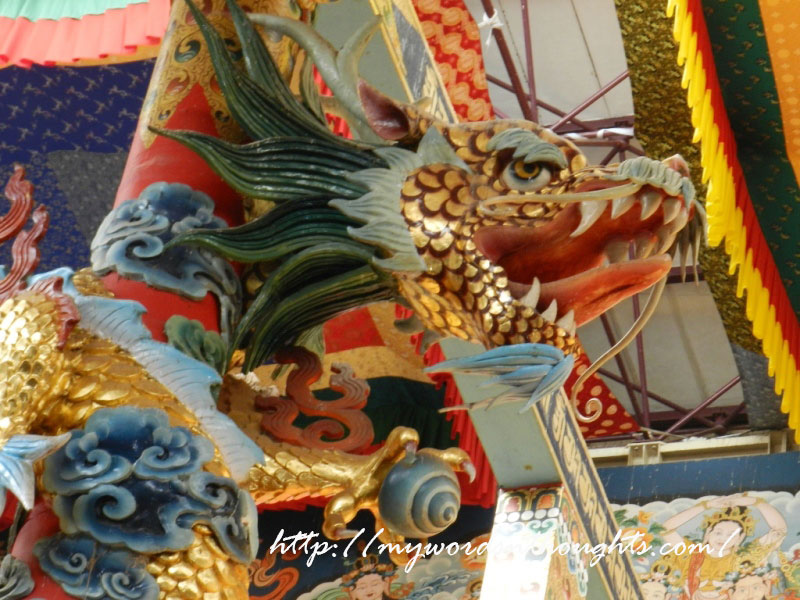
When you spend a whole day in the premises, it lifts you with a spiritual experience. When you return from Namdroling Monastery in the evening, you can see visitors also moving from there. Shops which sell Tibetan model toys and chains start closing now. Book shop of the monastery will also be closed.
If you want to learn Buddhism, you can reach here as a student, and it’s not specific that you should be an Indian. Students from Nepal, Singapore and many other countries reach here, to learn more about Buddhism. Many students join because of their growing interest in the religion and to see it near. The course takes 9 years to complete. After that you can move to your native place and teach new students about the essence of Buddhism.
How to reach from Kerala?
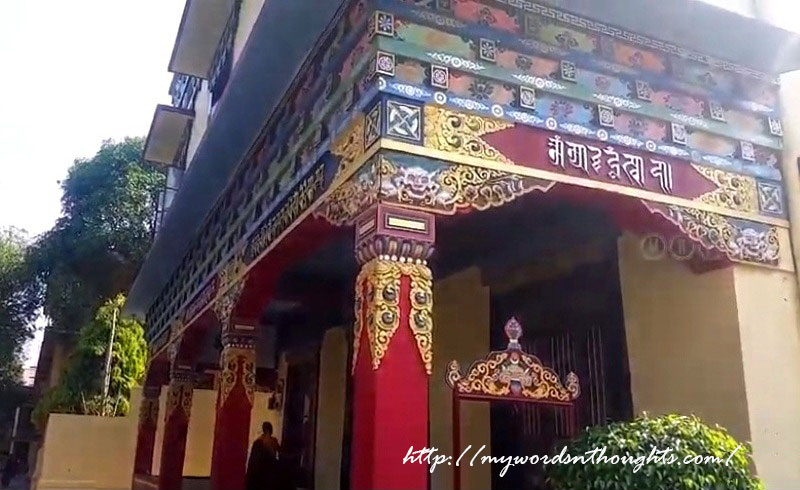
If you start your journey from Kerala you can take the path from Kozhikode, Thalassery or Kannur to reach Bylakuppe. If you want to enjoy the nature beauty of Wyanad, choose Thamarassery-Kalpatta-Tholpetty-Gonikoppal route. From Thalassery, you can take the route Koothuparambu-Mattannur-Iritti or Manathavadi-Tholpetty-Kutta-PonnamPettu. From Kannur take the route Mattannoor-Iritti-Virajpetta and travel 143 kms to reach Bylakuppe. From Bylakuppe, it takes approximately 3 kms to reach Tibetan temple. It’s easy to find accommodation. PDL guest house is also available at the entry point, where rates are cheap.
Also read a few more articles on tourist locations outside Kerala. Click on the images in the gallery to read

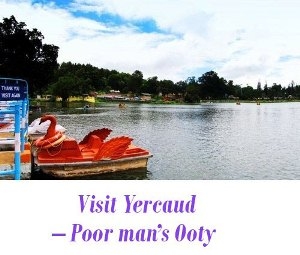


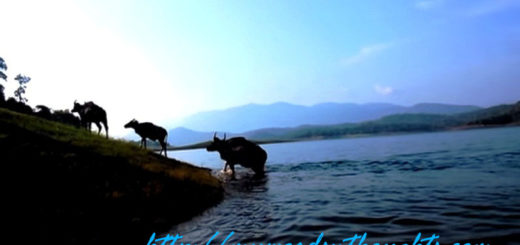











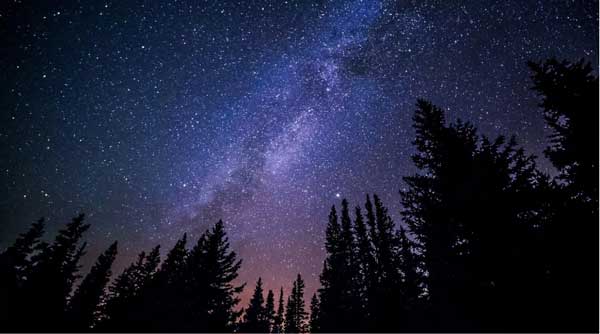
Recent Comments